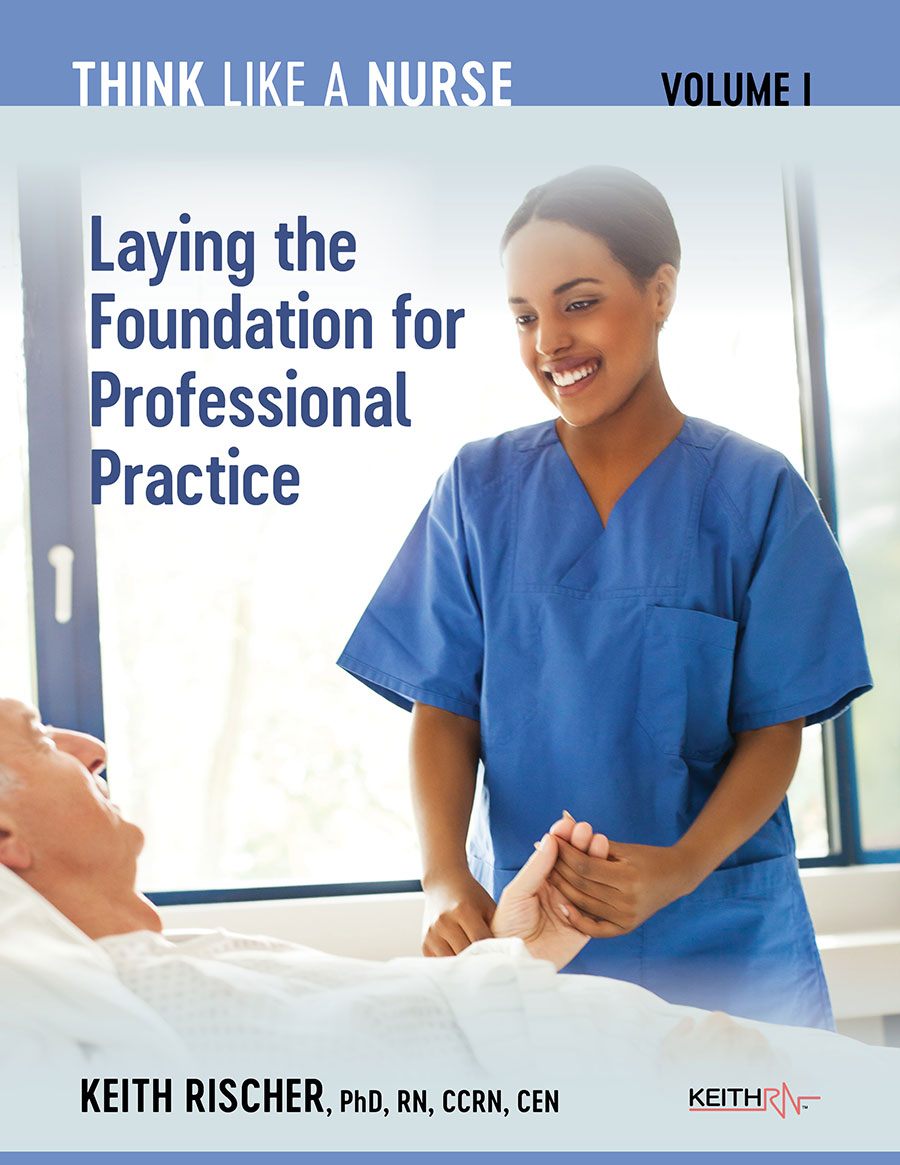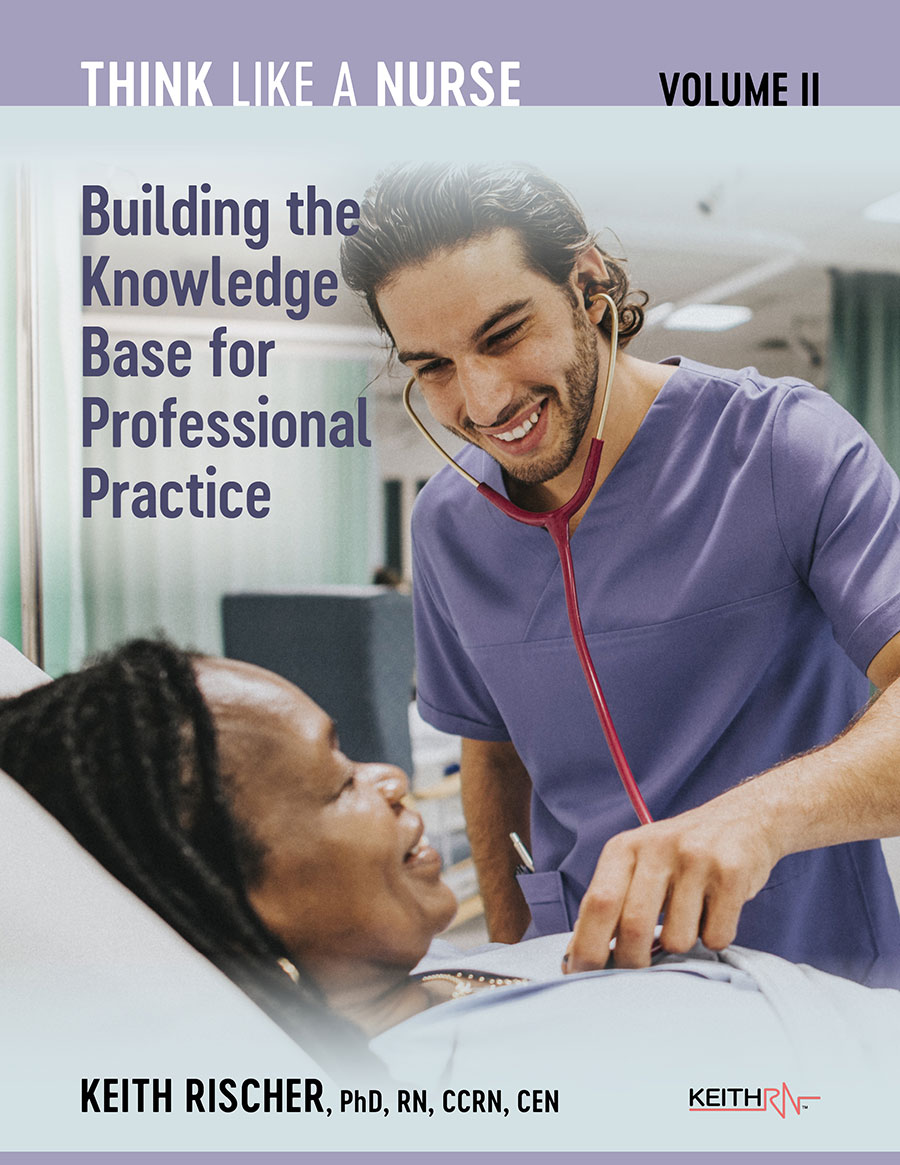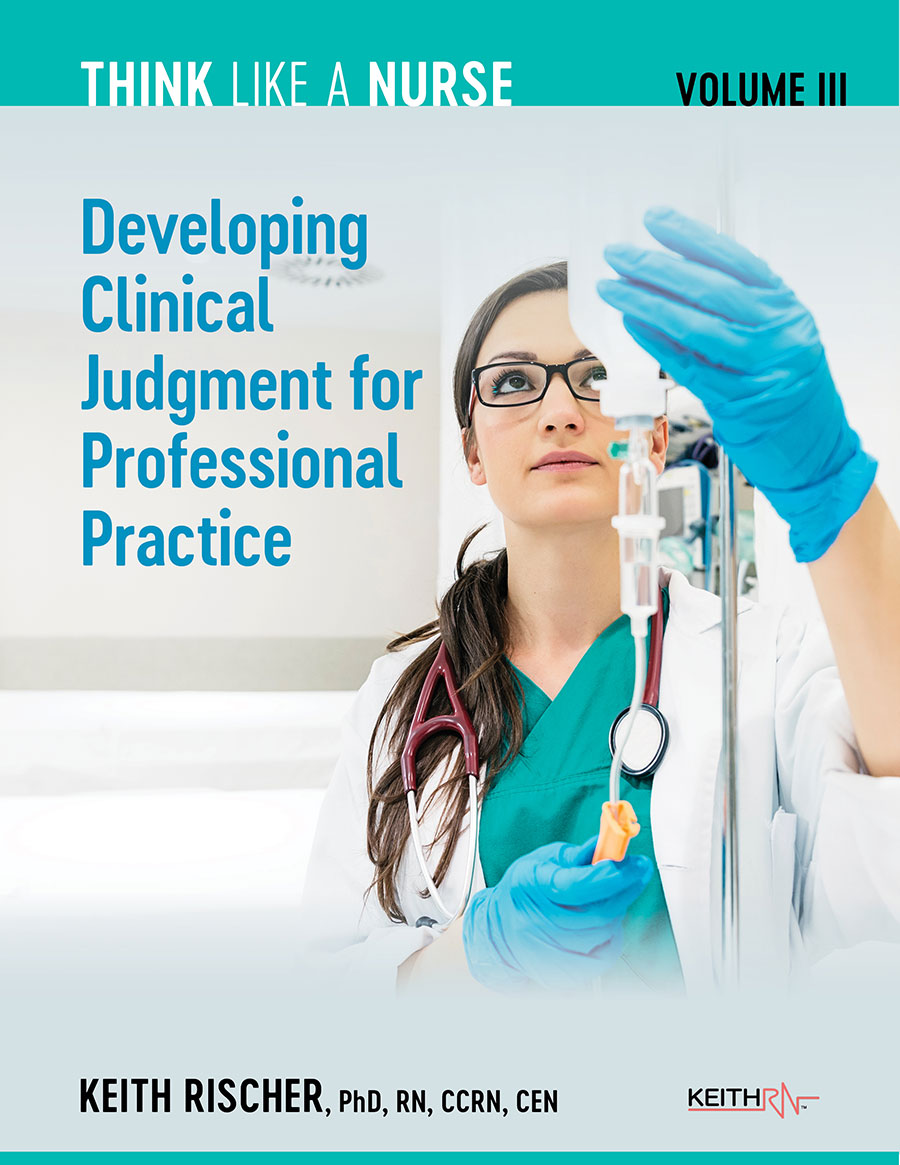Keith Rischer, PhD, RN, CEN
Are you overwhelmed with the challenges you face to develop clinical judgment?
I’m here to help.
With declining clinical hours, increasing patient complexity, and too much information in the curriculum, nursing students struggle to understand what is most important for safe patient care.
As a result, nurses graduating with entry-level clinical judgment skills has declined from 23% in 2017 to only 9% today.
This crisis in competency can result in adverse and potentially disastrous patient outcomes.
What students need to develop clinical judgment
Students and new nurses need to learn a holistic approach to develop clinical judgment and prepare for safe practice. This comprehensive approach begins by emphasizing the 3 C’s: CARING, CRITICAL THINKING, and CLINICAL REASONING.

Hi, I’m Keith. And I’m committed to empowering educators to develop clinical judgment.
As a nurse with over 35 years of experience who remained in practice as an educator, I’ve witnessed the gap between how nursing is taught and how it is practiced, and I decided to do something about it!
I launched KeithRN in 2012 to improve the practice-readiness of students by creating innovative case studies that help students practice clinical judgment skills.
Since then, thousands of educators and students have successfully used my unfolding case studies and best-practice strategies to practice and develop clinical judgment.
My practical, integrated textbooks prepare nursing students for real-world practice.
Each volume of Think Like a Nurse presents foundational knowledge that builds from one book to the next.
Content is introduced, defined, and reinforced with clinical-based activities and practical guidance from practicing nurses.
Prepare students for practice and Next Generation NCLEX, with active learning that relates concepts to case studies from clinical practice.

Volume I: Laying the Foundation for Professional Practice
Students learn how to develop grit and practice study and test-taking strategies to improve their success, how to provide authentic holistic patient care, and how to establish a professional identity so they can start to think, feel, and act like a professional nurse.

Volume II: Building the Knowledge Base for Professional Practice
Students review the essential knowledge of the applied sciences to develop critical thinking. Before knowledge can be used, it must first be understood. Application activities help students understand and relate this content to clinical practice.

Volume III: Developing Clinical Judgment for Professional Practice
Students learn the steps of clinical reasoning: identifying the most important patient data, determining that data’s significance, recognizing and prioritizing problems, and setting nursing priorities—all supporting the effective development of sound clinical judgment.
To find out how the textbook series can be integrated across the curriculum, view this informative guide! Learn more about textbook adoption for your course/program.
Table of Contents: Volume 1
THINK
Like a Nurse
Volume I
Laying the Foundation for Professional Practice
Keith Rischer, PhD, RN, CCRN, CEN
Contents
Introduction: Building Your House of Professional Nursing Practice
Part I: Essentials of Student Success
Chapter 1: Personal Foundations for Nursing: Intelligence Is Great, but Grit Will Get You Through
Chapter 2: Student Life: Don’t Just Survive—Thrive!
Chapter 3: Academic Success: Strategies for Optimum Academic Results
Student Resources
-
-
- Weekly Block Schedule
- Self-Care Guide
- Comprehensive Learning Success Plan
- Learning Styles Inventory and Study Strategies Worksheet
- Test Success Plan
- Exam Declarations
-
Part II: Laying the Foundation
Chapter 4: Holistic Care: The Foundational Art of Nursing
Chapter 5: Developing Your Professional Identity
Chapter 6: Choosing Civility: Steps to Restore Wounded Caregivers and the Nursing Profession
References
Appendices
A. Core Aptitudes and Traits for Nurses: Pre-nursing Self-Assessment
B. Core Aptitudes and Traits for Nurses: Reflection Guide
C. The Nightingale Pledge
D. A Nurse’s Prayer
Table of Contents: Volume 2
THINK
Like a Nurse
Volume II
Building the Knowledge Base for Professional Practice
Keith Rischer, PhD, RN, CCRN, CEN
Contents
Preface
Introduction: What Do You Need to Know to Think Like a Nurse?
-
-
- Pathophysiology
- Nursing Assessment
- Pharmacology
- Lab Values
- Patient Scenario: Put the Sciences Together to Think Like a Nurse
-
References
Appendices
Appendix A: Pathophysiology Activities
I. Pathophysiology Review Activity
II. Care Planning Activity
III. Pathophysiology Critical Thinking Activity
IV. What Problem Came First? Activity
Appendix B: Pathophysiology Worksheets
I. Pathophysiology Review Worksheet
II. Care Planning Worksheet
III. Pathophysiology Critical Thinking Worksheet
IV. What Problem Came First? Worksheet
Appendix C: Pharmacology Activities
I. Patterns of Pharmacology Activity
II. Pharmacology Classes Activity
III. Pharmacology Made Practical Activity
Appendix D: Pharmacology Worksheets
I. Patterns of Pharmacology Worksheet
II. Pharmacology Classes Worksheet
III. Pharmacology Made Practical Worksheet
Appendix E: Lab Values Review Worksheet
Appendix F: Connecting the Sciences Worksheet
Table of Contents: Volume 3
THINK
Like a Nurse
Volume III
Developing Clinical Judgment for Professional Practice
Keith Rischer, PhD, RN, CCRN, CEN
Contents
Introduction: What Does It Take to Think Like a Nurse?
-
-
- Developing Clinical Reasoning
- Noticing Skills
- Interpreting Skills
- Problem Recognition Skills
- Planning and Prioritization Skills
- Evaluation and Reflection Skills
- Case Study: Put It All Together to Think Like a Nurse
- Preparing for Clinical Practice
- How You Can Improve Outcomes and Prevent Patient Deaths
-
Epilogue: Make a Difference
Appendices
A. Preparing for NCLEX and Next Generation NCLEX
B. The Nightingale Pledge
C. A Nurse’s Prayer
Take the next step to develop holistic clinical judgment in your students.
Get all three textbooks and see how you and your students can benefit from this unique resource as a textbook for program adoption.
APPLY LEARNING IMMEDIATELY.
These concise, integrated resources emphasize a practice-based approach so students can immediately apply what they’ve learned. Educators are then empowered to focus on developing students’ clinical judgment.
LEARN FROM REAL PATIENT SCENARIOS.
Clinical Reasoning Case Studies engage students by allowing them to practice what they’ve learned and develop the critical thinking and clinical judgment skills used in practice.
DEVELOP DEEP UNDERSTANDING.
Each book uses a variety of interactive learning tools, including case studies, worksheets, and quick reference guides with opportunities to pause, reflect, engage in the content, and jot ideas in the margins. Students retain the knowledge gained and develop deep understanding apply at the bedside where it matters most!
GET A MENTOR & GUIDE THAT’S ALWAYS THERE.
Students need more than NextGen NCLEX questions to review to develop clinical judgment. Each volume is a comprehensive resource written in an easy-to-read, mentoring tone that will remain relevant through nursing school and into practice.
Though students are the primary audience for this resource, every nurse educator will learn how clinical judgment can best be developed, then consider it as a resource for course adoption in your program.
To find out how the textbook series can be integrated across the curriculum, view this informative guide!
What Students Have to Say
“Using decades of clinical experience and education, Keith provides foundational knowledge and reasoning that guides any nurse towards effective clinical judgment. As a student nurse, I’ve benefitted from this book to build and establish critical thinking as it applies to the nursing process.”
— Noah RobinsNursing student, University of West Georgia
“Think like a Nurse will help students realize their calling and presents a clear path to practically live out the vocation of caring and to do it with joy. Keith’s book is like a map in the desert of nursing school by providing needed direction. Those who read it will not be same and as a result will make a difference in all they do as a nurse.”
— Sr. Miriam RiveraNursing student
What Educators Have to Say
“Transitioning from a layperson to a professional is not an easy task—yet Keith makes it seem doable and even fun! I am especially pleased that the new chapter on professional identity truly helps students imagine themselves as nurse professionals—with all the depth and breadth that educators hope for their students. An excellent resource—Bravo!”
— Nelda GodfreyPhD, ACNS-BC, RN, FAAN, ANEF, Professor and Associate Dean, Innovative Partnerships and Practice, University of Kansas School of Nursing
“An abundance of gratitude to Dr. Keith Rischer for bringing the topic of incivility and the vital need to foster civility and healthy work and learning environments boldly into the light through this book. Dr. Rischer offers readers numerous techniques to build healthier and more productive work and learning environments.”
— Cynthia ClarkPhD, RN, ANEF, FAAN, founder of Civility MattersTM, and Professor Emeritus, Boise State University
